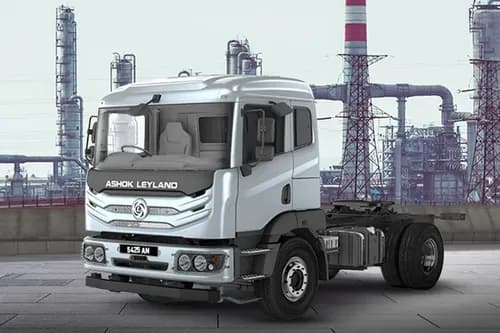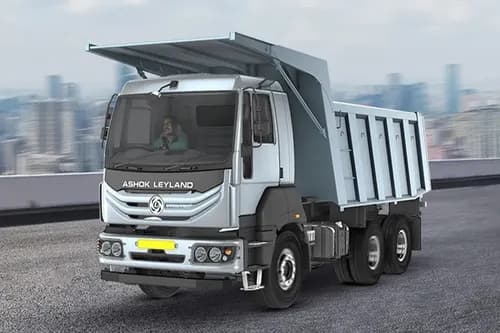Ad
Ad
Ad
Agroforestry: Importance, Scope, Benefits And Its Types
In this article, we will discuss the power of Agroforestry, its Importance, Scope, Benefits And Types

Climate change, food security, and land degradation are some of the problems the world is going through. Agroforestry is a ray of hope for sustainable agriculture and environmental protection in an era of climate change, deforestation, and limited natural resources.
Agroforestry, an old land use system, is gaining popularity as a powerful solution that combines agriculture and forestry to address these challenges. This integrated land management approach combines agriculture and forestry, offering numerous benefits. In this article, we will discuss Agroforestry, its Importance, Scope, Benefits And Types.
What Is Agroforestry
Agroforestry is a type of farming in which trees are combined with crops or livestock on the same land. Agroforestry is a combination of woody plants (timber, clump, palm, bamboo, and other cambium-borne plant species), agricultural plants (seasonal species) and/or livestock that are grown according to the season and geographic conditions. This helps with soil quality, and biodiversity, and can provide extra income for farmers.
Agroforestry involves growing trees and shrubs alongside agricultural crops and/or livestock. These trees and shrubs are not grown in isolation but are integrated to enhance overall productivity.
Agroforestry is a time-saving and revenue-enhancing concept. However, it come into practice in recent decades to fight climate change, conserve biodiversity, increase income and ensure food security.
In short, Agroforestry is an agricultural method that involves growing trees with crops or livestock on the same piece of land. This helps with soil quality, and biodiversity, and can provide extra income for farmers.
Also Read: National Mission for Sustainable Agriculture: Objectives, Strategies, and Benefits Explained
What Are The Types Of Social Forestry

Social forestry is a concept where we use idle lands to grow quick-growing trees for things like food and fuel. This will protect our natural forests from overuse. In 1976, the National Commission on Forests introduced the term "Social Forestry" to restore land near cities that had lost their trees because of human activities. Social forestry includes forest management, afforestation of deforested regions, and forest protection, with the goal of improving rural, environmental, and social development.
Types Of Social Forestry
Agroforestry: Combining tree planting with agriculture to enhance land productivity and provide communities with wood, fruits, and other products is known as Agroforestry.
Farm Forestry: Farm forestry is a land management practice that focuses on growing trees for specific purposes, often with the primary goal of harvesting a valuable product. While it is commonly associated with the cultivation of timber trees on private lands, farm forestry can also encompass various other uses, such as fruit farming.
Extension Forestry: Extension forestry is a popular practice in urban and suburban areas, focusing on the strategic planting of trees alongside roads, canals, railways, and within communities. It is often implemented by governments as a means to improve the quality of life in urban environments.
Community forestry: Community forestry involves the collective management of communal land by villagers. It empowers local people to plan, implement, and benefit from projects on land, including crop harvesting. This approach promotes social, economic, and ecological benefits for the community. Its primary goal is to increase local involvement and uplift the entire village, reducing inequality among members and promoting a more harmonious and prosperous community.
Agroforestry Systems And its Types
Agroforestry systems are land management practices that involve the integration of trees, shrubs, or woody trees with crops or livestock on the same piece of land. These systems are designed to enhance agricultural productivity, conserve natural resources, and promote ecological balance while providing numerous economic, social, and environmental benefits.
Types of Agroforestry
Agroforestry is classified into three types:
Agrisilvicultural systems are a mix of crops and trees. In this type, you have to Plant rows of trees or shrubs in between rows of crops. This can increase crop yields by improving soil fertility and protecting against wind and erosion. For eg: alley cropping or home gardens.
Silvopastoral systems combine forestry and animals feeding on pastures, rangelands, or on the farm. This system provides shade for animals, improving their well-being and productivity, while also producing timber or fruit.
Agrosylvopastoral Systems: When the three elements, namely trees, animals, and crops, are combined then it is known as the agrosylvopastoral system. Small-scale agroforestry systems are performed around homes, combining fruit trees, vegetables, and small livestock. They provide a diversified source of food and income. For eg: home gardens with animals and distributed trees on croplands utilized for grazing after harvests.
Principles of Agroforestry

Agroforestry systems have several principles that are explained below:
Effective use of resources: Agroforestry maximizes resource use by recycling nutrients, reducing water usage, and minimizing waste.
Cost-effectiveness: Tree products, such as fruits, nuts, timber, and non-timber forest products, can be harvested and sold, providing additional income. Agroforestry can be economically beneficial by diversifying income sources for farmers.
Community Welfare: Agroforestry often strengthens local communities by creating jobs, providing knowledge, and improving food security.
Biodiversity: Agroforestry promotes biodiversity by growing different trees and plant species. It provides a habitat for various wildlife and enhances soil health.
Reliable: By maintaining ecological balance and minimizing environmental impacts, agroforestry helps preserve natural resources for future generations.
Steps for Agroforestry Farming

Following are the steps you have to follow for Agroforestry farming
Site Selection
- Identify the land
- Study about the land's climate, soil type, and topography.
- Consider the goals and objectives of agroforestry, such as timber production, fruit production, erosion control, or biodiversity enhancement.
Choose Species
- Select tree species that are well-suited to the local climate, water and soil conditions.
- Ensure that the selected tree species are compatible with the chosen crops or livestock.
Design a Layout
- Plan the layout for trees, crops, and livestock
- Decide on the spacing between trees and the arrangement of tree rows to allow for maximum sunlight penetration to crops.
- Consider the needs of livestock
Cultivate the Land
- Prepare the field for tree and crop cultivation.
- Improve soil fertility by adding manures and fertilizers
- Perform Soil testing.
Prepare Trees and Crops saplings
- Plant tree seedlings or saplings according to the planned layout
- Simultaneously, plant crops that are compatible with the selected tree species.
Maintenance
- Monitor for pests and diseases and take appropriate measures to protect both trees and crops.
Water Management
- Consider irrigation methods, especially in areas with seasonal rainfall variations.
- Implement water-saving techniques
Harvest and Utilize
- Harvest crops and trees
- Utilize tree products, such as timber, fruits, or nuts, for consumption or sale.
Spread awareness and provide Training
Provide education and training on agroforestry principles and practices to farmers and landowners.
Agroforestry is a flexible way of farming that can be adapted to increase your income. Effective planning, management, and ongoing evaluation are essential for realizing its potential benefits in terms of sustainability and improved livelihoods.
Benefits of Agroforestry

The Benefits of agroforestry are given below:
Preservation of Biodiversity: Agroforestry systems provide habitat for plant and animal species. As a result, it promotes biodiversity conservation and enhances ecosystem services.
Food Security and Soil Improvement: By increasing agricultural productivity, agroforestry contributes to food security for communities. Tree roots enhance soil structure, increase nutrient cycling, and reduce erosion. This improves the fertility and resilience of agricultural land.
Water Management: Trees help regulate water flow. Hence, it reduces the risk of floods and droughts. They also filter pollutants from water and improve groundwater levels.
Climate Change Mitigation: Trees take carbon dioxide from the atmosphere, helping to fight climate change. Agroforestry systems can store significant amounts of carbon in both above-ground and below-ground biomass.
Income Source: Agroforestry diversifies income sources for farmers. Tree products can be harvested and sold, providing a reliable income stream.
Challenges and Adoption
Despite its numerous benefits, the adoption of agroforestry practices faces several challenges. These include land tenure issues, limited access to resources and knowledge, and the time it takes for trees to mature and provide significant benefits. Policy support, education, and financial incentives are required for promoting agroforestry on a broader scale.
Difference Between Social Forestry And Agroforestry
Social Forestry:
- Focuses on meeting the needs of local communities.
- Involves the planting of trees for social and environmental benefits.
- Trees are often planted in community areas, along roads, or in public spaces.
- It involves both forest and fruit trees.
Agroforestry:
Integrates tree and agricultural crops.
Combines tree planting with crop or livestock farming.
Designed to improve agricultural productivity.
Benefits include enhanced soil fertility, increased biodiversity, and diversified income sources.
Importance of Agroforestry
Agroforestry is important because of the following reasons:
Boosts Farm Productivity: Combining trees with crops or livestock can increase overall agricultural Productivity.
Conserve the Environment: Agroforestry helps prevent soil erosion, improve water levels, and reduce greenhouse gas emissions.
Enhances Biodiversity: It provides habitats for wildlife and promotes a variety of plant and animal species.
Offers Economic Benefits: Agroforestry can generate additional income through timber, fruits, and nuts.
Supports Local Communities: It can create jobs, provide firewood, and improve food security in rural areas.
Scope Of Agroforestry
The scope of agroforestry involves integrating trees and shrubs with agriculture. It offers benefits like increased crop yields, improved soil health, better water management, and additional income sources for farmers. Agroforestry promotes sustainability and biodiversity, making it a promising approach for future agriculture.
Also Read: Drones: The Future of Indian Agriculture
Conclusion
In a simple way, Agroforestry is the combination of agriculture and trees, including the use of trees in agriculture. Agroforestry is a way of managing land where you plant trees or shrubs alongside crops or pastures. This mix of plants creates a natural-like system that helps agriculture work better and last longer. Trees can produce fruits, nuts, medicines, wood, and other valuable stuff.
This combination of farming and forestry has many benefits, for eg getting more food from crops, making farmers richer, having many types of plants and animals, keeping the soil healthy, and preventing soil erosion. Agroforestry works well in tropical areas. It's like intercropping but can be more complex with many plant layers.
Features & Articles
Top 5 Tata Ultra Trucks in India 2025: Price, Features And Specifications Explained
The Tata Ultra range offers modern and stylish trucks. In this article, we have listed the Top 5 Tata Ultra Trucks in India 2025 with their price, specifications and feat...
17-Feb-25 06:24 AM
Read Full NewsBest Three-Wheelers Showcased At Auto Expo 2025
If you are interested in buying three-wheelers or want to learn more about the latest features and technologies in three-wheelers, this article is for you. ...
14-Feb-25 12:36 PM
Read Full NewsDiscover Why Electric Rickshaws Are Smart Investments in India
Electric three-wheelers have become a smart choice for many businesses due to several reasons. Here’s Why Electric Rickshaws Are Smart Investments in India...
12-Feb-25 01:18 PM
Read Full NewsExcavators in India: Types, Best Models and Their Uses in Construction Sites
Explore excavator types in India, their features uses, and prices. Find the best machine for construction, mining, and infrastructure projects....
11-Feb-25 11:41 AM
Read Full NewsFASTag New Rules: Everything You Need to Know
According to the plan, the cost for a monthly pass will be Rs 3000. Additionally, commuters can opt for a lifetime pass for Rs 30,000....
11-Feb-25 09:43 AM
Read Full NewsSWITCH Mobility IeV8: The Smart Electric Commercial Vehicle
The IeV8 offers two battery options: 70 kWh and 140 kWh, which allow it to cover distances of up to 250 kilometers. ...
06-Feb-25 01:28 PM
Read Full NewsAd
Ad
Registered Office Address
Delente Technologies Pvt. Ltd.
M3M Cosmopolitan, 12th Cosmopolitan,
Golf Course Ext Rd, Sector 66, Gurugram, Haryana
pincode - 122002
Join CMV360
Receive pricing updates, buying tips & more!
Follow Us
COMMERCIAL VEHICLE BUYING BECOMES EASY AT CMV360
CMV360 - is a leading commercial vehicle marketplace. We helps consumers to Buy, Finance, Insure and Service their commercial vehicles.
We bring great transparency on pricing, information and comparison of tractors, trucks, buses and three wheelers.

























